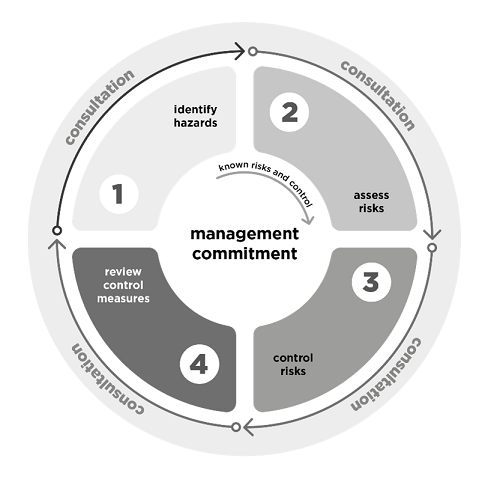Manage the risks
In agriculture, risks may arise from physical labour such as manual tasks, using machinery and vehicles, or working with animals. There are also risks to mental health that need to be identified and managed. The risks are higher when working in remote areas or in isolation from other workers.
Everyone who works in agriculture must have the right skills to carry out their work safely and meet their work health and safety (WHS) duties. As a worker, you have a duty to take reasonable care of your safety and that of others in the workplace.
Risk management process
You must identify and manage risks to keep yourself, workers and your workplace safe from risks from agriculture work.
This can be done by following the risk management process:
- Identify the hazards
- Assess the associated risks
- Implement control measures to eliminate or minimise risks
- Regularly review your control measures to ensure they remain effective.
You need to consult with your workers and any health and safety representatives through this process.

Figure 1. Diagram of the risk management process.
Examples of the risk management process can be found in Appendix B of the model Code of Practice: How to manage work health and safety risks.
Hierarchy of controls for managing risks
You should always aim to eliminate risks, as this is the best way to manage risk. If you can’t eliminate risks, you must minimise risks so far as is reasonably practicable.
Use the hierarchy of control measures to control risks in your workplace and reduce exposure to hazards. The ways of controlling risk are ranked from the highest level of protection and reliability to the lowest. Administrative controls and personal protective equipment (PPE) are the least effective. They do not control the hazard at the source and rely on human behaviour and supervision.
Learn more:


